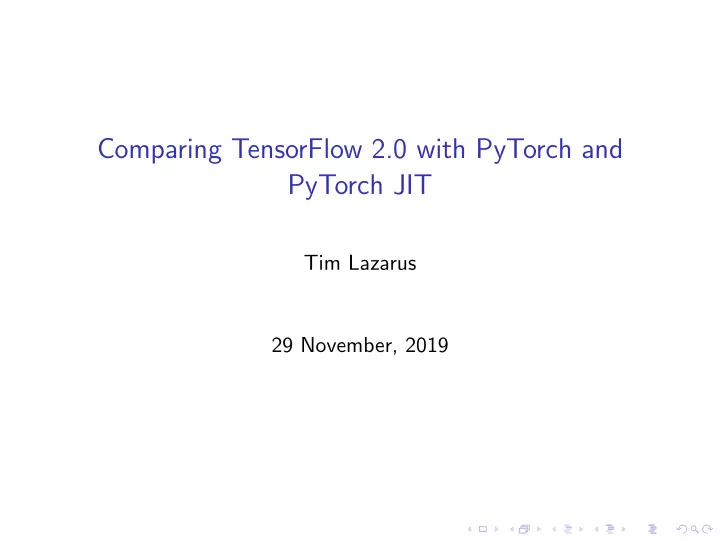

Comparing TensorFlow 2.0 with PyTorch and PyTorch JIT Tim Lazarus 29 November, 2019
Comparing TensorFlow 2.0 with PyTorch and PyTorch JIT Tim Lazarus 29 November, 2019
Static Computation Graphs In a static execution model , we define the graph structure at compile time. The graph then gets built and compile-time optimisations are applied. The same graph can be used multiple times. TensorFlow is a prime example of a system with static computation graphs.
Dynamic Computation Graphs In dynamic execution models , the graph is defined as it is run. This means the structure of the graph can be dependent on the input. This is exceptionally useful in the NLP domain, where loops in graphs are common. PyTorch is a prime example of a system with dynamic computation graphs.
Example
Example
Example
Example
Example
Example
Example
PyTorch JIT PyTorch actually has a Just in Time Compiler At a basic level the JIT uses a subset of Python called Torch Script to define graphs so certain optimisations are possible and for increased portability. For simple networks, this can be easily compiled using trace , but for more complex graphs with control flow the user must directly write in Torch Script.
The Project TensorFlow 2.0, just introduced eager execution to compete with PyTorch. I wish to compare the performance between TensorFlow 2.0, PyTorch and PyTorch with its JIT. I would imagine that the JIT would outperform PyTorch, but I am interested to see the di ff erence in the other systems.
Questions?
Recommend
More recommend